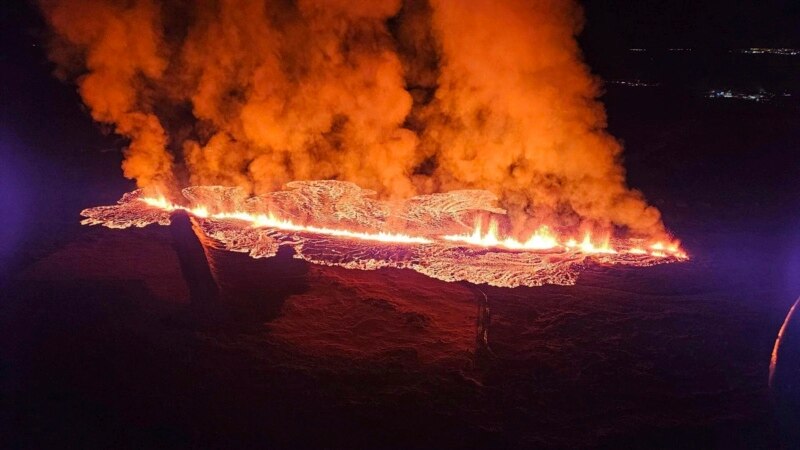A volcano has erupted in southwestern Iceland for the second time in less than a month, sending semi-molten rock spewing toward a nearby settlement.
The eruption just before 8 a.m. Sunday came after a swarm of earthquakes near the town of Grindavik, the Icelandic Meteorological Office said. The community was evacuated overnight, Iceland’s RUV television reported.
“Lava is flowing a few hundred meters north of the town, this is 400 to 500 meters,” Kristín Jónsdóttir from the Icelandic Meteorological Office told Iceland’s RUV television. “Lava flows towards Grindavik.”
Residents of Grindavik were previously evacuated from their homes in November and had to stay away from the town for six weeks following a series of earthquakes and an eventual volcanic eruption. They were allowed to return on December 22.
The town of 3,800 near Iceland’s main airport was evacuated Nov. 10 when an earthquake swarm led to cracks and openings in the earth between the town and Sýlingarfell, a small mountain to the north. The nearby Blue Lagoon geothermal spa — one of Iceland’s biggest tourist attractions — also closed temporarily.
In the weeks since, defensive walls had been placed around the volcano in hopes of directing the magma away from the community. But the walls of the barriers built north of Grindavik have been breached and lava is on the move toward the community, the meteorological office said.
Iceland, which sits above a volcanic hot spot in the North Atlantic, averages an eruption every four to five years. The most disruptive in recent times was the 2010 eruption of the Eyjafjallajokull volcano, which spewed huge clouds of ash into the atmosphere and led to widespread airspace closures over Europe.

